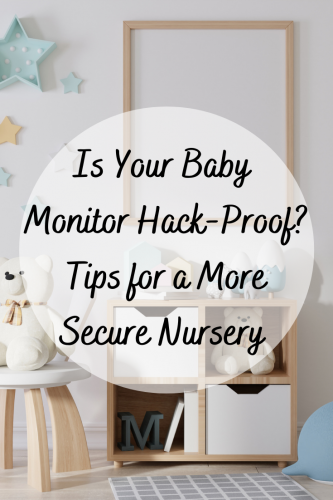
In today’s tech-driven world, parents have more access than ever to tech-based tools that help make the job of parenting easier. But as technology evolves, the risk of hacking and security vulnerabilities goes up. Anything that’s connected to WiFi presents an opportunity for hackers and cybercriminals to gain access to your personal information and data, and unfortunately, baby monitors are no exception.
While baby monitor hacks aren’t incredibly common, the risk still exists if you’re using a WiFi-connected monitor. Luckily, securing your baby monitor goes hand in hand with basic home wireless network security, and it’s not difficult to make sure your WiFi-connected monitors and other home devices are secure—it only requires a few simple steps.
Protect Your Wireless Router
Whether you have a baby monitor or not, this is a critical security step that anyone with home WiFi should tend to. First, always ensure that you keep your router’s firmware updated, as each available update will handle any security vulnerabilities that may have arisen since the last update.
Second, you should always make sure remote router access is disabled in your firmware’s settings. Most router settings are set to disable remote router access by default, but if you think you might have changed it at any time, it’s best to double-check.
The last step to securing your wireless router is making sure you have a strong WiFi password. If your WiFi isn’t already password protected, you should give it a password immediately—leaving your WiFi network open gives hackers an easy way into your home network, and ensuring it’s password-protected will significantly reduce the likelihood of a hacker gaining access to it.
Secure Your Baby Monitor
The first step in securing your baby monitor is changing the default login credentials it came with when you first purchased it. Take the time to create a strong username and password to keep hackers from accessing it.
Next, you’ll want to secure the baby monitor camera. This entails staying on top of firmware updates, which is a simple way to keep hackers at bay. The instructions for updating your camera’s firmware will vary based on the manufacturer of the monitor you bought, but referring to the instruction manual or visiting the website of the monitor you purchased is an easy way to find the steps to ensure your firmware is up to date and secure.
For the most thorough baby monitor protection, it’s a good idea to register your monitor with the manufacturer. This way, you can stay in the loop when any new security updates become available. If any security issues are discovered after the product has been released, the manufacturer typically releases software updates to handle the issue—but you won’t receive notice of them unless you’ve registered your monitor and are in contact with the company.
Every home has different needs, and there’s no one-size-fits-all solution when it comes to the right baby monitor for you and your family. The most important thing is to take the time to understand the ins and outs of the baby monitor you’re considering and think about your comfort level when it comes to the level of security they provide. For a deeper dive with step-by-step instructions to secure your baby monitor, along with a buying guide on choosing a safer monitor, check out the infographic below!
Please include attribution to PandaSecurity.com with this graphic.





Leave a Reply